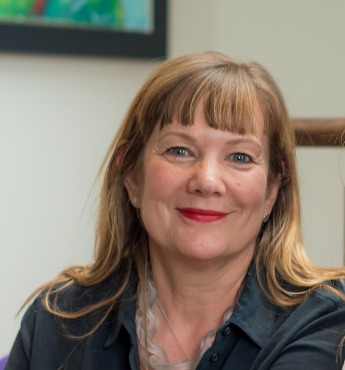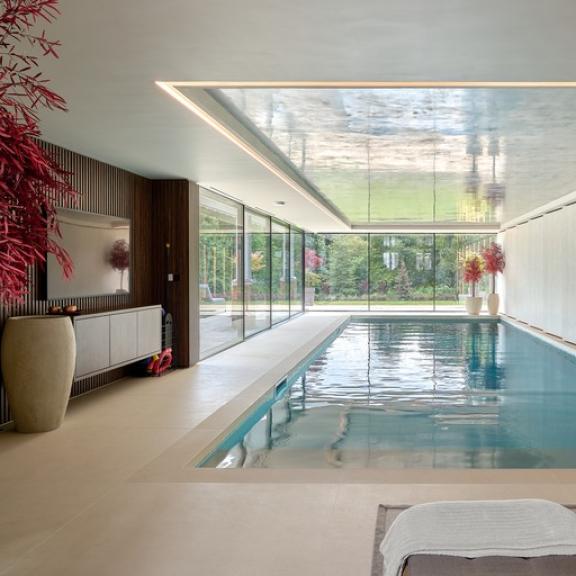Interview with The BIID President
Harriet Forde
What do you see as the role of an interior designer?
An Interior designer is a professional who’s skills are realising a vision for an environment. That can be a combination of the client and interior designers vision merging or just the interior designer’s awareness of what a space needs.
Depending on the size of the project the interior designer is responsible for providing everything onwards from what the architect does.
On a larger project they are a very necessary part of a team, they will dovetail with the architect, providing the interior architecture and all FF&E [furniture, fixtures & equipment].
On a smaller project it might mean doing everything, project managing, purchasing and site supervision.
Tell us about who you are and what you do?
We are celebrating 20 years in business, which is exciting. What a wonderful year for me to be president of the BIID. It feels as though it is great timing that they have combined.
We continue to do what we have done from the outset; mixing residential with commercial. We focus mostly on London but have worked elsewhere. Personally, I feel I have reached a point where I have enough experience that I am confident in my position, I have come in to my own in terms of the grounding I have established. I am very grateful to be in the position that I am in the Industry where I have run a profitable company for the last 20 years.
What made you want to be an Interior Designer?
I was one of those children that loved pattern, colour and nature and spent my childhood moving my bedroom around to try out different layouts.
How did you become and interior designer?
I did my first qualification at 18. I went to the London College of Furniture and did a Day Tech in Interior Design, which led me into looking at textiles, colour, pattern and form.
I decided to take a diversion into doing a degree in textile design at Central St Martins. After that I realised that what I really liked was the application of textiles within an interior. I combined the two elements and got a junior designer position with a company that worked with Trust House Forte. From there, I then went on to work with various large hospitality companies in London, so I am really pleased that I had that start in the industry.
When and why did you join the BIID?
I was originally part of the IDA which merged with the BIID around 2013. Why did I join? Well I have always felt that networking with other designers is incredibly valuable, especially working on your own with a small team. I went from being in a big company and I missed the social interaction with my peers in a wider environment.
What do you feel the BIID now brings to the Industry?
A voice! Education! Standards! The voice gives interior designers a platform to show who we are, as members to show professionalism and creativity. That is such a vital part of a construction project.
How important do you think CPD is?
Really, really important. It is not only critical in keeping up with latest technologies and regulations, its also really good for somebody to keep learning. We should never be static, we should be learning and absorbing and watching as the world changes.
For instance, I really enjoyed the BIID accredited Interfloor CPD [A Specifiers Guide to Underlay & More] as despite what might seem like a dry subject, we learnt quite a lot, and when you are specifying products it’s great to know you know your stuff.
Going forward I am really looking forward to the BIID organised event 'Instagram for Interior Designers' which I have signed up for in October.
What advice would you give to a young aspiring interior designer?
Once you have joined as a student member and completed your interior design course, try out as many different aspects of interior design as you can as there are many different fields to work in. This will help you get a sense of which part of the industry you would like to focus on.
It is always a good idea to work for someone else before you set up your own company too.
And of course, make it a priority to become a BIID Associate member and get the experience you need to become a Registered Interior Designer.
What is your vision for the BIID this year?
It’s not my vision but the BIID’s vision that has been carefully crafted by the council. I see myself as having been passed the baton of responsibility to follow through with those targets and values.
Explore new resources from the BIID. Seeing a padlock? Just login or become a member to view.
View the highlights from our 60th anniversary party
We asked Anna Burles: What makes the perfect software?
Discover the smart home technology awards with Platinum Partner, CEDIA
Explore the latest, member-exclusive, templates designed to make your life easier.
University of Gloucestershire wins the BIID Student Design Challenge 2025.






